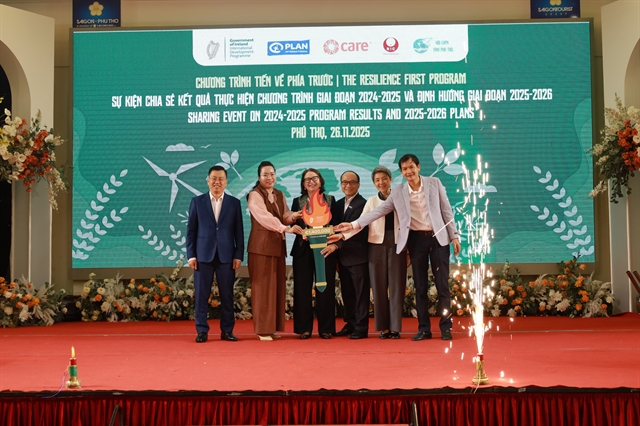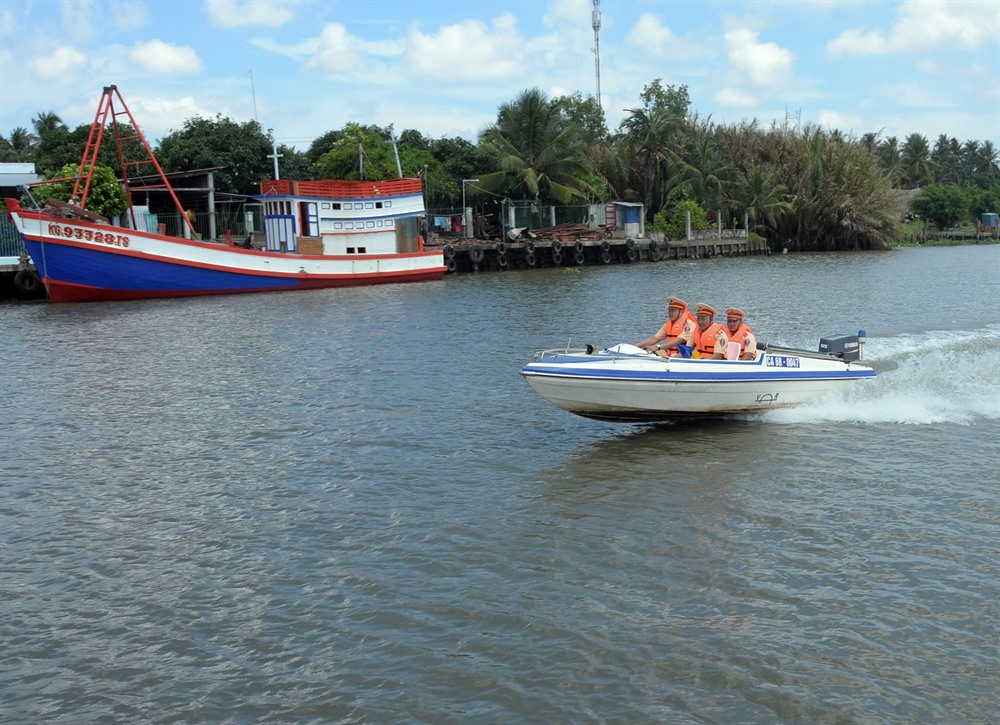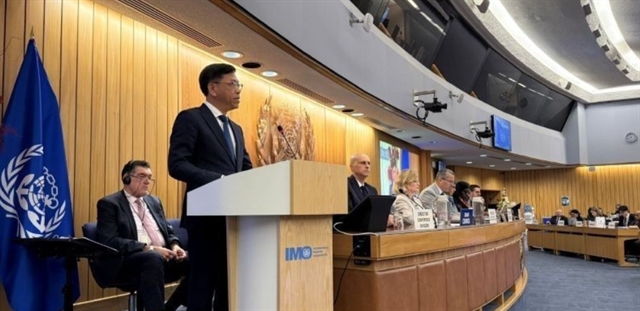 Society
Society

Investment in improving and maintaining the inland waterway transport infrastructure network is a strategic priority recommended by the World Bank to better connect inland areas to seaports to facilitate export activities.
 |
| Waterway police patrol a river in Bình An Commune, the southern province of Kiên Giang’s Châu Thành District. Waterway transport can be more cost effective than shipping via roadways, but the country’s system lacks investment funds and remains underused. — VNA/VNS Photo Lê Sen |
HÀ NỘI — Investment in improving and maintaining the inland waterway transport infrastructure network is a strategic priority recommended by the World Bank to better connect inland areas to seaports to facilitate export activities.
According to its report “Sustainable Development of Inland Waterway Transport in Vietnam: Strengthening the regulatory, institutional and funding frameworks” released on Thursday, increased investment and sound management are critical to maintaining the competitive advantages of inland waterway transport.
Investment will also enhance the environmental advantages of water transport, including lower greenhouse gas emissions per tonne of freight carried.
Last year, Việt Nam’s inland waterways transport (IWT) accounted for a 17 per cent share of all freight transport, while trucking and coastal shipping accounted for 77 and 5 per cent, respectively.
The report concluded the IWT system is doing many things well. It carries a higher share of goods than in any other country except the Netherlands and its traffic is still increasing.
This strong performance is underpinned by the fact that its main networks in the north and south serve the two most highly populated and economically productive regions of the country.
Việt Nam has about 26,500km of navigable waterways and a 3,000km coastline. There are more than 170,000 vessels in the country’s IWT fleet; most of them very small but larger and more specialised vessels are growing in numbers. International experience shows these vessels can deliver better services at lower costs.
Hoàng Anh Dũng, the World Bank’s senior transport specialist, pointed out several factors that may hinder the sector’s development.
For example, the legal framework for the sector was comprehensive but cumbersome and not easy for stakeholders to access. The sector requires a significant increase in funding for maintenance but the allocation of Government budget funds is still limited.
The sector received about 2-3 per cent of the annual transport sector budget from 2011-15, but the number decreased to only 1.2 per cent for the period of 2016-20, which is likely to be inadequate to support necessary expansion and maintenance.
The state of the country’s IWT infrastructure is reliant on natural conditions, Dũng said, adding that only 29 per cent of waterways (about 2,033km) can handle at least a 300DWT barge because many channels are narrow and shallow with limited bridge clearance.
“Ports have outdated handling facilities, low levels of mechanisation, are poorly maintained or have poor access to inland areas,” Dũng said.
Ousmane Dione, World Bank Country Director for Việt Nam, said the country has been one of the most open economies in the world and that efficient and reliable transport played a critical role in supporting the export-oriented economy.
“As tariffs on international trade have been sharply reduced and manufacturing costs have increased, Việt Nam’s export competitiveness is increasingly dependent on factors such as quality, productivity, efficient supply chain and lower transport and logistics costs,” he said.
International experience has shown that waterway and coastal shipping can lead to lower logistics and environmental costs compared to individual trucking.
For example, the cost to move a 40-foot container via waterways can be as low as 10 per cent of the cost on the road, and road transport emits two to three times more emissions.
Better linking waterways to other modes of transport would create a seamless, multi-modal transport network that would lower costs and enhance sustainability.
Trần Đỗ Liêm, chairman of Việt Nam Inland Waterway Transport Association, said most IWT firms are small, preventing them from winning big deals.
The use of inland container depots (ICDs) was still limited by the fact that 70 per cent of goods were loaded and unloaded manually or semi-manually, taking more time and labour. Liêm said limited connectivity between ICDs and major roads and railways made companies looking goods delivery services hesitant to use waterways.
Minister of Transport Nguyễn Văn Thể said the transport sector has seen an imbalance in its development. The country has paid attention to developing roads but has not made full use of its waterways.
He said the ministry would develop policies to promote further investment into inland waterway transport.
Also on Thursday, the World Bank released its report “Strengthening Việt Nam’s Trucking Sector for Lower Logistics Costs and Greenhouse Gas Emissions”, which emphasises that roads form the backbone of the country’s freight transportation system. Logistics costs account for nearly 21 per cent of the country’s GDP, higher than in other Southeast Asian nations. This affects the competitiveness of exports and raises the cost of goods.
The two reports were developed under the Australia-World Bank Partnership. — VNS




